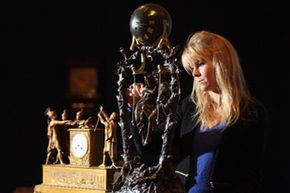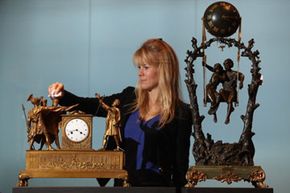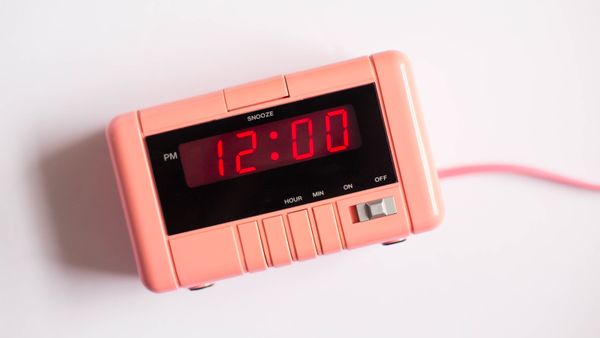Lots of people love puzzles and mysteries -- and that number apparently includes lots of clockmakers. How else would you explain the popularity of mystery clocks over the last couple of centuries? Whether they're French or German 19th-century antique curiosities worth six figures, exquisitely expensive jeweled 20th-century creations, or used models of a popular 1950s American electric clock, mystery clocks are still valued by collectors and nostalgia lovers alike.
The popularity of mystery clocks is no mystery at all. They're novelties and great conversation pieces. They are mind-boggling at first glance, and amusingly fascinating once you understand what's going on. They're triumphs of imagination and craftsmanship, and they're often works of decorative art as well.
Advertisement
The mystery comes in how these clocks work. They're sometimes called impossible clocks because they seem to have either no workings at all, or floaters because the clock hands don't seem to be connected to any workings. With more conventional clocks, it's easy to see where the hands are attached to the workings that move them, whether powered by a mechanical pendulum or an electric motor. But in mystery clocks, the hands seem to move with no apparent mechanism to drive them. Turn the clock over, examine the back, and you still won't be able to tell what makes it tick and keep accurate time.
So what's the answer to this mystifying puzzle? Keep reading to learn how mystery clocks work.
Advertisement


